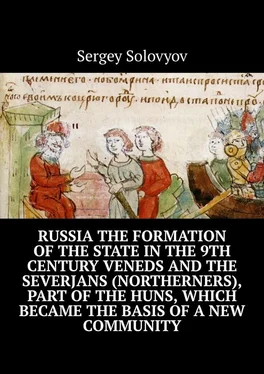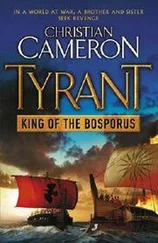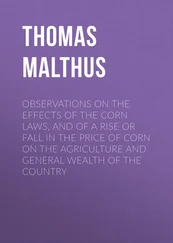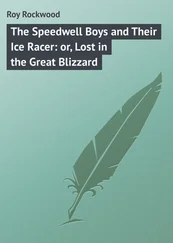1 ...6 7 8 10 11 12 ...27 Here, as you can see, Tarja-river is also mentioned as the place of the ancestral home of the Indo-Europeans, which remained with the Hellenes in the form of Tartarus, as one of the places of the land of their ancestors.. Researchers have established an undoubted connection between the Indrik beast and the Vedic and Hindu deities Indra, and his weapon is the Vajra, vahana bearer) is the elephant Airavata, which also brings him closer to Ganesha, and on whose behalf the name of the country – India, and the sacred river – Indus, and the people – Indians, and religion – Hinduism are formed. And in the Russian North there are still many names of rivers with the most ancient common Indo-European root “ind”. For example, the Indiga River is the river basins between the Pechora and Mezen rivers, the river flows into the Barents Sea, and one of the Indiga tributaries is the VYREY river (and it is known that Iriy-Vyri is the name of the Kingdom of Heaven in Slavic myths). from Yamal, west of the Ob, in the same administrative district. It is also interesting that there are places in the Russian North with the sacred name “Ida”. Scientists suggest that in the era of the ancient Indo-European ethnocultural community, Indra was the single supreme god of the Indo-Europeans. After the disintegration of the Indo-European conglomerate of tribes and the departure of the Aryans from the North to the Indian subcontinent, in the memory of the Proto-Slavs, and later the Russians, one of the many incarnations of Indra – “The King of Beasts”, “Mother of all beasts” was preserved. “A brief description of the Ostyatsky people” by Novitsky says: “some who want to confirm the narrated for the reliable, so His likeness is described: with a height of three arshins, almost an arshin length, his legs are like those of a bear, his horns, folded crosswise, he wears on himself, and when he digs caves, then he bends and stretches like a crawling snake. Some, contradicting this, argue that these bones belong to unicorns or some other beasts of the sea, during the flood of Noah, they were applied and dried up on the earth by water, but by antiquity they went into the earth.
“And the beast Indrik appeared. And the beast Indrik became a father to all beasts, a beast to all beasts. The beast Indrik itself is blue, and his eyes are golden. And maybe even the beast Indrik turns into a mighty blue warrior. His eyes are golden, he glows with a blue radiance of inner light, he holds a stone club in his hands, and he is dressed in stone armor. And so it is huge, higher than the mountains it is underground. The beast Indrik, the giant underground warrior, rides through the underworld in a stone chariot (that is, similar in skin color to Krishna and Yama (blue skin))
The wheels of that chariot are huge stone millstones, and monstrous black stone dogs, giant dogs, are harnessed to that chariot. And the eyes of those dogs burn like the fires of a thousand bonfires. And those dogs roar like a thousand thunders. And those dogs breathe fire and smoke. The beast Indrik, the giant underground warrior, rides through the underground world in his chariot. And he fights with lizards and underground dragons. And the Underground Lizard crawls away from him into his inferno. And he closes his inferno on the brass door.”
Throughout the Russian North and even farther – in Manchuria and China – legends about a strange creature of unprecedented growth called the indrik-beast are widespread. It is supposedly the size of an elephant and is endowed with horns that serve as a digging device. Descriptions of a giant mole named ting-shu or in-shu (“the mouse that hides”) we find in ancient Chinese books. Despite the hyperbolic dimensions of the incredible beast, it should be recognized that folk art is by no means a baseless fantasy. Life and real observations gave the narrators quite reliable material for this legend.
As said, this creature lives in the earth. It digs passages and tunnels with a horn and thereby opens keys, cleans springs and fills lakes and rivers with water. And if the indrik-beast under the ground makes noise, “the whole Universe will shake.” True, this is not a predatory beast, but a completely peaceful giant: “he does not hurt anyone,” apparently feeds on plants or what he finds underground. Well, it is quite possible that in this case we are talking about real mammoths, whose tusks and frozen carcasses are often found in Siberia. Apparently, both the legendary giant mole Tin-Shu, and Fan-Shu, and the Indrik-beast, and the Finnish Mamut are one and the same creature. The modern Russian name “mammoth” just comes from the old Russian word “mamut”. The Russians borrowed it from the Finnish tribes inhabiting European Russia. In many Finnish dialects, “ma” means “earth”, and “mut” means “mole” in Finnish, that is, mamut is an earthen mole.
“The mountain gave birth to a mouse” is a famous saying in ancient Greece and Rome. What does it mean? Apollo Sminthias Sminfey (Σμινθεύς), in Greek myth-making, the epithet of the god Apollo in the northwest of Asia Minor in Troas. The very name Sminfei is derived from the word αμίνθος, which meant a mouse among the Cretans. In this regard, the mouse was an attribute of the prophetic god Apollo, hence its name ζωον μαντικώτερον (prophetic animal). One of the months (Σμίνθειον) was named after Sminfei; in addition, ancient Greek authors mention the Rhodes festival of Sminfey. Pisarevsky writes that “The mouse in the cult of Apollo with Asclepius corresponds to the mole in the cult of Rudra with Ganesha” [Pisarevsky p.5] (The legend that only a mouse is afraid of an elephant). That is, the migration of Indo-Aryans from the coast of the Arctic Ocean is proved by toponymy of places, the location of mammoth burial grounds in that region, and the emergence of myths about Ganesha, Apollo and Indrik-Zver, in the regions of the Ob river basin, and the present Arkhangelsk, Vologda regions and the Komi Republic, and Khanty-Mansiysk district, where there are cases of findings of mammoth remains. Also, numerous finds of the most valuable artifacts in the Yamal region and the mouth of the Ob river, as well as in the area of the river. Kama of a later time, the so-called “Zakamsky silver”, which most likely were donations from Iran, Byzantium to the sanctuaries of the Far North, described by Herodotus, who considers these places to be associated with the veneration of Apollo, and Herodotus gives evidence of Aristeus, who visited the Far North in execution vows. That is, the tradition, memories of the ancestral home, already at a later time turned out to be so strong that offerings to the gods to the ancestral home of the Indo-Europeans were sent from Iran and Greece, for which there is material evidence, these are the treasures of Yamal and the Zakamsk treasures.
White gods of the Indo-Europeans
The Baltic Slavs had a deity BEL-God, his name was interpreted as kind, good. But the main thing is that he is WHITE. Bel-Bog sometimes became Chernobog, in a rage. And then it becomes clear why. Indrika, in the legends of the North is also called Blue.
Diomedes wounded Aphrodite at Troy according to the legend set forth by Homer:
The moisture that flows from the inhabitants of the happy sky:
For they do not eat brushes, nor do they partake of grapes of wine;
That is why they are bloodless, and they call them immortals.
With a loud cry, the goddess threw her son out of her arms;
Apollo quickly took him into his arms and accepted and rescued him,
ἰχώρ, οἷός πέρ τε ῥέει μακάρεσσι θεοῖσιν:
οὐ γὰρ σῖτον ἔδουσ᾽, οὐ πίνουσ᾽ αἴθοπα οἶνον,
τοὔνεκ᾽ ἀναίμονές εἰσι καὶ ἀθάνατοι καλέονται.
Читать дальше












